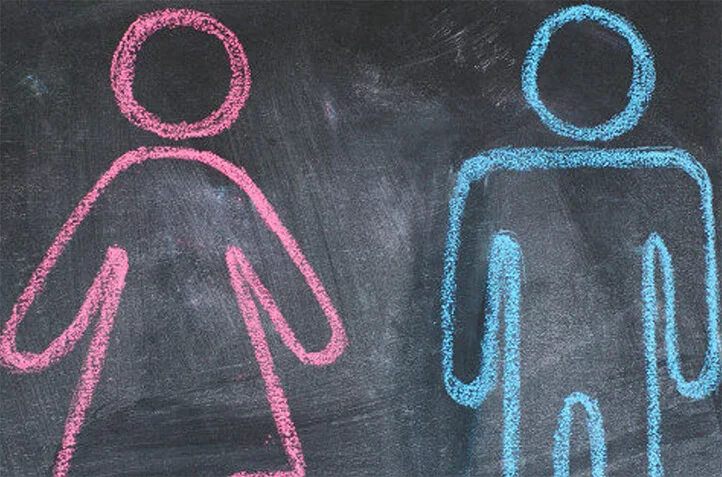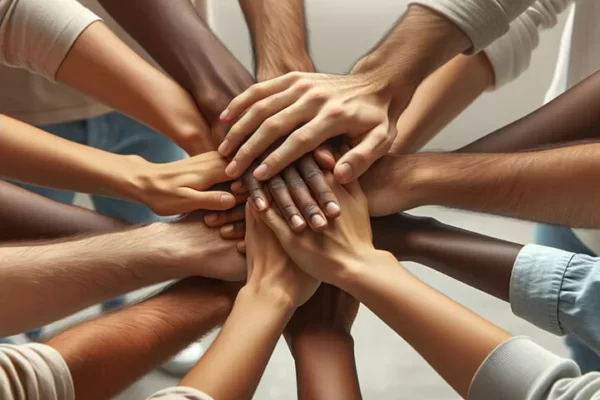The psychology of relationships between men and women is a field of psychological science that studies the specifics of interaction between representatives of opposite sexes. It covers a wide range of topics, including mutual understanding, mutual attraction, love, marriage, sexuality, gender roles in society, as well as contradictions and conflict resolution.
This field explores both general patterns of behavior and interaction and individual differences that may be related to culture, upbringing, personality, and other factors.
Understanding the psychology of relationships between men and women has a significant impact on various aspects of life, both at the individual and societal levels.
- Personal relationships. A deep understanding of this topic helps individuals establish healthier and more productive relationships. Knowing what drives the opposite sex helps better interpret partner behavior, express one’s own emotions and needs, and resolve conflicts productively.
- Upbringing and education. Parents and educators who understand the psychology of relationships between genders can raise children with a healthier perception of male-female interactions, teaching them respect and empathy.
- Professional application. In the fields of psychological counseling, social work, medicine, and even business, knowledge of the psychology of relationships between men and women can be a valuable tool. It helps professionals better understand and support their clients or colleagues.
- Social perspective. At the societal level, understanding the psychology of inter-gender relationships contributes to the elimination of stereotypes, gender discrimination, and inequality.

Biological and Psychological Differences
- Biological Differences: Men and women have differences at the biological level, which include physical and physiological aspects. These differences encompass primary and secondary sexual characteristics, the structure and functions of the nervous system, and hormone levels and balance. Additionally, research shows that men and women may have different disease susceptibilities and responses to medications.
- Psychological Differences: At the psychological level, differences between men and women include variations in behavior, emotional response, perception, and cognitive abilities. Some studies indicate that men and women interact, communicate, and solve problems differently. However, it is important to remember that these differences are general and can vary significantly from person to person.
Sex and Gender: Differences and Influence on Relationships
“Sex” and “gender” are often used interchangeably, but they refer to different concepts.
- Sex typically refers to the biological and physiological differences between men and women, including aspects of anatomy, chromosomes, reproductive functions, etc.
- Gender refers to the socially constructed roles, behaviors, activities, and attributes that society considers appropriate for men and women. This includes issues of identity (i.e., feeling oneself as male, female, non-binary, etc.) and social roles.
Both sex and gender influence relationships between people.
Biological differences affect the physical aspects of relationships, such as attraction, reproduction, perception, interpretation of signals, and behavior of others.
On the other hand, gender roles and expectations shape behavior patterns, ways of communication, decision-making processes, and distribution of responsibilities in relationships. Gender identity can also influence how an individual interacts with others and what types of relationships are comfortable for them.
Biological Differences and Their Influence on Perception of the World
Biological differences between men and women can affect various aspects of perception.
- Perception of the physical world: Studies show that men and women may perceive colors, sounds, and spaces differently. For example, some studies indicate that women, on average, better distinguish color shades, while men are more sensitive to motion and spatial orientation.
- Perception of the social world: Biological differences, such as hormone levels and balance, can influence social perception and emotional reactions. For example, levels of oxytocin, a hormone associated with trust and social bonding, vary between men and women and affect their perception of social signals.
- Self and others’ perception: Biological differences can also affect self-esteem and the perception of others. For example, studies show that men and women perceive and assess their physical and intellectual abilities differently.
Psychological Differences and Their Influence on Perception of Reality
Psychological differences between men and women can also influence the perception of the world and other people.
- Perception of emotions: In general, research shows that women are more sensitive to emotional signals, while men tend toward analytical and task-oriented perception.
- Perception of risk: Psychological studies have also found differences in risk perception between men and women. Men are generally more risk-prone, while women tend to be more cautious.
- Social perception: Psychological differences can also influence how men and women perceive and interpret social signals. For example, women are often rated as more empathetic and observant in social interactions.
- Self-perception: Psychological differences can also affect self-esteem and self-perception. Women, for example, are more prone to self-criticism, while men are more self-confident.
However, these generalizations are based on average data and can vary significantly from individual to individual. Additionally, these differences can be influenced by sociocultural factors such as social norms and expectations.

Psychology of Relationships Between Men and Women: Main Theories
One of the key concepts in understanding interpersonal relationships is that people strive for relationships that bring more benefits (love, support, pleasure) compared to costs (conflicts, stress, disappointment). If the balance of benefits and costs is positive, the relationship is likely to continue.
Another important approach to understanding relationships emphasizes the importance of early relationships in developing attachment patterns that affect how people interact in relationships throughout life. These attachment patterns, developed in early childhood, can shape expectations about how much we can rely on others and how comfortable we feel around others.
Attachment Theory
Attachment theory is a psychological, evolutionary, and ethological theory proposed by psychiatrist and psychoanalyst John Bowlby. It suggests that a child has an innate need to form strong emotional bonds with caregivers, which is a key factor for survival.
Bowlby suggested that attachment develops at an early age and influences a person’s relationships throughout life. Mary Ainsworth, a colleague of Bowlby, expanded the theory by proposing a model that distinguishes three attachment styles: secure, avoidant, and anxious-ambivalent. Later, a disorganized attachment style was added to these three.
Attachment theory in the context of the psychology of relationships between men and women is applied to explain how early relationships with parents or caregivers can shape expectations and behavior in romantic relationships in adulthood.
- Secure attachment style: People with this style feel comfortable in relationships, easily make friends, can form deep emotional bonds, and are not afraid of being rejected. They communicate easily and openly with partners, expressing their needs and feelings.
- Avoidant attachment style: People with this style prefer to avoid closeness and emotional dependence on others. Such people may keep partners at a distance to avoid being hurt or rejected. They value their independence but may suffer from chronic loneliness.
- Anxious-ambivalent attachment style: People with this style often behave clingy, anxious, or insecure in relationships, show high emotional reactivity, suffer from instability, and worry that partners might leave them.
- Disorganized attachment style: This style can manifest in chaotic or contradictory behavior and is usually characteristic of people who have experienced traumatic events in childhood. They may find it difficult to form stable, healthy, consistent, and predictable relationships.
Social Exchange Theory
Social exchange theory is a psychological theory that views interpersonal relationships through the lens of economic principles. It suggests that people enter and maintain relationships that bring them maximum benefit at minimum cost.
The main principle of social exchange theory is that we strive to maximize our benefits (love, pleasure, support) and minimize our costs (stress, conflict, disappointment). If the benefits in a relationship exceed the costs, people stay in it; if the costs exceed the benefits, they will look for a way to end such a relationship.
Within this theory, there is also the concept of the “comparison level of alternatives,” which states that people evaluate their relationships by comparing them with possible alternatives. If current relationships are unsatisfactory compared to possible alternatives, a person will decide to change or end these relationships.
Although social exchange theory is useful for understanding the motives and processes underlying the psychology of relationships between men and women, it has been criticized for presenting relationships as a simple exchange of benefits and costs, without considering the emotional depth and complexity of interpersonal interactions.
Attraction Theory
There are various approaches to this theory, but there are generally accepted factors that influence attraction between men and women: attractiveness, proximity, similarity, and reciprocity.
- Attractiveness: Physical attractiveness plays a significant role in initial attraction. However, attractiveness can be not only physical but also emotional, where people are attracted to the character or personality of another person.
- Proximity: Being or living close to someone can foster attraction. This is because the more often we see someone, the more opportunities we have to establish a connection with them.
- Similarity: We often are drawn to people who are similar to us, whether it be similar interests, values, beliefs, or life experiences. This enhances the feeling of understanding and connection.
- Reciprocity: Attraction is also known to be strengthened if we feel it is mutual. Reciprocity in emotions enhances our own feelings of attraction.
These factors together or individually play a role in the process of forming attraction between people. However, it should be noted that this process is very individual and can vary significantly from person to person.

What Do Men and Women Want?
Traditionally, it is believed that men value physical attractiveness and sexual compatibility. However, as society evolves, men’s expectations have become more diverse and profound. Many men seek emotional closeness, trust, and respect in relationships. They want a partner who supports their goals and ambitions while respecting their individuality and independence.
Women typically seek emotional closeness and reliability in a partner. They want to feel loved, valued, and supported. Like men, women also value physical attractiveness and sexual compatibility, but they often place a significant emphasis on emotional attachment and security. Women desire a partner who understands their emotions, is attentive to their needs, and respects their goals and ambitions.
Stereotypes and Reality
Examining stereotypes versus reality is an interesting and important task, especially when it comes to the psychology of relationships between men and women. Let’s explore some common stereotypes and compare them with reality.
- Stereotype: Men don’t show their feelings and emotions.
- Reality: Men can express their feelings and emotions differently, and this doesn’t always align with societal expectations. Many men may indeed hide their emotions due to social pressure or fear of being misunderstood.
- Stereotype: Women are more emotional than men.
- Reality: Although society often expects women to express their emotions more openly, this doesn’t mean they are more emotional. It simply means that women are more socially permitted to express their emotions.
- Stereotype: Men always want sex, and women want romance.
- Reality: Sexual and emotional needs of men and women vary and depend on many factors, including personality, culture, education, and more. Both sex and romance are important to men and women, and each individual can experience these needs uniquely.
- Stereotype: Women are more sociable than men.
- Reality: The ability and desire to communicate do not depend on gender. The level of sociability is more related to individual personality traits and circumstances rather than gender.
Psychological Needs of Men and Women in Relationships
Relationships are a complex process that involves numerous psychological needs and desires. Although needs can vary from person to person regardless of gender, some common needs are often observed in men and women in relationships.
Men:
- Respect: Many men feel a strong need for respect and recognition in relationships. They want their values, decisions, and efforts to be acknowledged and appreciated.
- Independence: Some men highly value their independence and autonomy even in relationships. They need space and time for their interests and friends.
- Sexual Intimacy: For many men, sexual intimacy is an important part of emotional connection and mutual understanding.
- Support: Men also seek support in their relationships. They want women to support their goals and ambitions.
Women:
- Emotional Closeness: Many women strive for deep emotional closeness and open communication in relationships. They want to share their feelings and thoughts with their partner without any fears.
- Security: Women often need security and stability in relationships. This can mean emotional, physical, or financial security.
- Understanding: For many women, it is important that their partner understands their feelings and experiences. They want to feel empathy and mutual understanding.
- Attention: Women also value attention and care. They want men to appreciate them and pay attention to them.
However, these needs can vary from individual to individual and are not always strictly tied to gender. They can also change over time and depending on the specific context of the relationship. To build healthy relationships together, it is important to communicate with your partner and learn about their unique needs and desires.

Communication in Relationships Between Men and Women
Communication is the cornerstone of any relationship, including romantic relationships between men and women. It is the process through which we express our thoughts, feelings, and desires to others. In the context of romantic relationships, successful communication enhances mutual understanding, attraction, and trust between partners. It helps in resolving conflicts, maintaining relationship satisfaction, and strengthening emotional bonds.
However, communication can be challenging. Differences in communication styles, expectations, and ideas about what constitutes “good” communication often cause misunderstandings and conflicts. It is important to learn to listen to each other, express yourself openly and honestly, and seek compromises when your communication styles do not align.
Differences in Communication Styles
Different communication styles are influenced by many factors, including cultural, social, educational, and individual differences. Here are some main communication styles typically highlighted by psychologists:
- Passive Communication Style: People who use a passive communication style usually avoid conflicts and often agree with others’ views even if they don’t agree with them. They may have difficulty expressing their thoughts and feelings, which can sometimes lead to dissatisfaction and resentment.
- Aggressive Communication Style: Aggressive communicators often express their opinions and feelings openly and directly, but they do not consider the feelings and viewpoints of others. This leads to conflicts and disagreements.
- Passive-Aggressive Communication Style: This style combines elements of both passive and aggressive styles. Passive-aggressive communicators do not express their feelings and opinions openly but instead show their dissatisfaction through sarcasm, ignoring, or evasive behavior.
- Assertive Communication Style: Assertive communication is considered the most effective. Assertive communicators can openly and honestly express their thoughts and feelings while respecting the viewpoints of others. They can listen, understand, and respond to others effectively and respectfully.
Understanding and Managing Emotions
Understanding and managing emotions can vary between men and women due to socio-cultural expectations, biological differences, and upbringing.
- Socio-Cultural Expectations: In many cultures, there are stereotypes about which emotions are “appropriate” for men and which for women. Men are often raised with the notion that they should be strong, not show weakness, and control their emotions. At the same time, women are often allowed to be more emotional and express their feelings openly.
- Biological Differences: Some studies suggest that men and women physiologically respond to emotional situations differently. This may be related to differences in hormones and brain structure. For example, women are more prone to empathy and intuitive understanding of other people’s emotions.
- Upbringing also plays a crucial role in how we understand and manage our emotions. For example, if a child is encouraged to express their feelings openly and taught to cope with negative emotions, they will have a well-developed emotional intelligence, regardless of gender.
Love Language: Understanding Partner’s Needs
The concept of “love language” was introduced by Gary Chapman in his book “The Five Love Languages.” According to him, each of us has a primary “language” through which we express and perceive love. He identifies five main love languages: words of affirmation, quality time, acts of service, physical touch, and gifts.
Understanding these languages and which one your partner prefers can help you better express your love and understand which of your partner’s actions are expressions of love. Additionally, it helps you better understand and meet the needs of men or women in relationships.
For example, if your partner’s primary love language is “words of affirmation,” they will feel loved when you speak kind and supportive words to them. If their primary love language is “quality time,” spending time together, communicating, and giving attention to each other is important to them.
By understanding these love languages, you can create deeper and more meaningful relationships that meet your needs.

The Psychology of Conflicts in Relationships Between Men and Women
Conflicts in relationships between men and women are inevitable, as each person brings their unique perspectives, expectations, values, and experiences into the relationship. Even the healthiest relationships sometimes face disagreements.
It is important not to fear conflicts but to see them as opportunities for growth and improvement in the relationship. Sometimes, conflict can even be beneficial for identifying and resolving issues, discussing differences, and deepening understanding of each other.
Causes of Conflicts Between Men and Women
Conflicts that undoubtedly affect the psychology of relationships between men and women can arise for various reasons. Here are some of the most common ones:
- Differences in communication styles. Men and women often communicate differently. For example, women may prefer a more emotional and contextual communication style, while men tend to be more direct and problem-oriented. These differences can lead to misunderstandings and conflicts.
- Differences in expectations and values. Each person brings unique expectations and values to the relationship, shaped by culture, upbringing, personal experience, and more. When men’s and women’s expectations and values do not align, it often leads to conflicts.
- Issues with the division of roles and responsibilities. Relationships often involve some degree of division of responsibilities and roles. If one party feels they are putting in more effort or that the division is unequal or unfair, it can lead to conflicts.
- Unmet emotional or physical needs. If the needs of one or both partners remain unmet, it will cause dissatisfaction, which will eventually become a source of conflict.
- Stress and imbalance. Whether it’s stress at work, financial problems, or childcare concerns, any external factors can pressure the relationship and cause conflicts.
It is important to remember that conflicts in relationships between men and women are normal and inevitable. What truly matters is how we manage these conflicts and work towards resolving them.
Conflict Resolution Strategies
Resolving conflicts is a complex process that requires listening skills and openness to compromise. Here are some strategies that can help:
- Active listening. Carefully listen and try to understand the other person’s perspective, even if you disagree. This will help you understand their views and feelings.
- Non-blaming communication. Try to express your feelings and views without blaming or criticizing. Use “I-statements” instead of “you-statements” (“I don’t like it when…” instead of “You always…”).
- Seeking compromises. Sometimes the best way to resolve a conflict is to find a compromise that both parties agree on. This requires flexibility and concessions on some issues.
- Taking a break to cool down. If emotions run high, it’s better to take a break and return to the discussion once everyone has calmed down.
- Acknowledgment and apologies. If you did something wrong, acknowledge the mistake and apologize. This helps to ease the tension and shows that you value the relationship more than your pride.
- Support from a third party. Sometimes it is helpful to seek help from a neutral third party, such as a сonsulting psychologist or therapist.
- Time and patience. Conflict resolution can take time. It is important to be patient and let the process take its course.
The Importance of Reconciliation After Conflict
Reconciliation after a conflict is one of the most important aspects of the psychology of relationships between men and women. Conflicts, whether big or small, are inevitable in daily life. However, what matters is how we respond to them and how we reconcile afterward.
- Restoring trust. Conflicts can shake trust in a relationship. Reconciliation helps restore this trust and demonstrates to both partners that they value their relationship above any misunderstandings.
- Improving mutual understanding. The reconciliation process usually involves discussing the conflict and understanding the other person’s perspective. This leads to greater empathy between partners.
- Growth and experience. Conflicts and subsequent reconciliation often become valuable experiences for both men and women. They help both partners improve their conflict resolution skills and more effectively manage disagreements in the future.
- Restoring intimacy. Reconciliation helps restore, and sometimes even improve, the emotional and physical intimacy in a relationship that may have been affected during the conflict.
- Preventive measure. Reconciliation helps prevent the accumulation of grievances and dissatisfaction, which can lead to more serious problems in the future.
It is important to understand that reconciliation does not mean ignoring or suppressing problems. It requires open and honest dialogue, mutual respect, and a willingness to compromise.

The Psychology of Relationships Between Men and Women: Secrets of Happiness
The secrets of a happy relationship are not magical tricks or mysterious recipes; they are based on deep understanding and respect for each partner. It does not matter how different your tastes, beliefs, and preferences are; what matters is the desire for mutual growth, development, and readiness to overcome difficulties together.
However, a happy relationship is not just about joy and excitement; it also requires work on yourself and your relationship. They require effort, attention, patience, and, most importantly, kindness and love for your partner. The foundation of long-term happiness in a relationship is the ability to accept and appreciate each other as you are, with respect for each partner’s individuality.
Shared Activities and Common Interests
Shared activities and common interests play a significant role in the psychology of relationships between men and women. They help strengthen the bond in the couple, support emotional closeness, and improve mutual understanding.
Shared activities do not necessarily have to be filled with activities or events. It can simply be time spent together at home, a shared dinner, or watching a movie. The main thing is the quality of the time spent together, when both of you feel you can be yourselves and openly communicate with each other.
Common interests are also an important component of a relationship. They provide a stimulus for joint activities, discussions, and experiences. At the same time, it is important not to completely identify yourself with your partner. It is important to maintain your individuality, have personal interests, and space.
Reasonable Compromises
Reasonable compromises are an integral part of any healthy relationship, including relationships between men and women. They help manage disagreements and conflicts while maintaining respect and love for each other.
A compromise does not mean giving up your beliefs or values. It is a mutual agreement that considers the interests of both parties. It involves mutual concessions, allowing both partners to feel comfortable and satisfied.
It is important to note that not all compromises are reasonable or healthy. If one side constantly makes concessions while the other only accepts them, it can lead to inequality and unhealthy relationships. Therefore, the key factor in a reasonable compromise is balance and mutual respect.
The Value of Respect and Trust
Respect and trust are two fundamental pillars of a healthy relationship between men and women. They form the basis of mutual understanding, harmony, and long-term, stable partnership.
Respect involves recognizing the value of your partner as an individual. It means respecting their feelings, opinions, preferences, boundaries, and avoiding attempts to control or dominate. In a relationship based on respect, each partner values the other as an equal.
Trust, on the other hand, implies confidence that your partner is honest, reliable, and always acts in the best interests of your shared relationship. Trust allows you to feel safe in the relationship and forms the basis for openness and closeness. Without trust, relationships can become full of stress and insecurity.
Mutual respect and trust in a relationship provide a solid foundation on which you can confidently build happy, healthy, and productive relationships.




